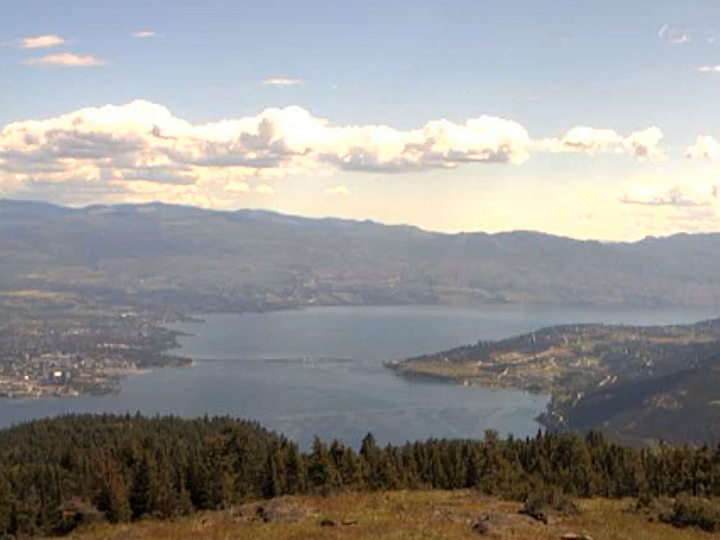With warm weather now soaking B.C.’s Southern Interior, the Regional District of the Central Okanagan is asking residents to remain flood-ready.

Increasing temperatures could bring sudden changes to creek, stream and lake levels throughout the area, said the regional district, which is also asking boaters to be mindful of their wakes.
The requests come with Okanagan Lake above its full-pool level, with fears that a sudden spring melt could lead to flooding, and that large waves can damage waterfront properties, including beaches.
The full-pool measurement of Okanagan Lake is generally considered to be 342.48 metres. As of Thursday afternoon, it was 25 centimetres above that at 342.73.
“The weather is unpredictable and has already contributed to isolated flooding this season,” said Sandra Follack, Central Okanagan regional emergency program coordinator.
“Property owners need to be vigilant and should actively monitor the weather and act accordingly. Those in low-lying areas and particularly those that were impacted in 2018 need to act now to protect their properties.”

For the Central Okanagan, Environment Canada is predicting a mixed bag of weather for the next week. The forecast includes:

Get breaking National news
- Friday: Mix of sun and cloud. High 28, low 15.
- Saturday: 40 per cent chance of showers. High 25, low 14.
- Sunday: 30 per cent chance of showers. High 25, low 11.
- Monday: Sunny. High 27, low 13.
- Tuesday: Sunny. High 29, low 15.
“We know that lake levels are very responsive to rain and additional precipitation in the coming weeks will only contribute to higher lake levels,” said Follack.
“Combined with any wave action, whether wind or boat generated, the situation is prime for the potential to create significant damage to waterfront property if not protected.”

Below are tips from the regional district on protecting structures and properties from flooding and wave damage.
- Ensure boats are secured.
- If you have a pull-up dock, pull it up as high as possible.
- If the dock is anchored, make sure the anchor lines are long enough, so they don’t snap if water rises too high.
- Secure the dock using sandbags on the edges of the dock.
- Remove all loose items from the dock, but do not clean any debris from the shoreline.
- Stay away from fast-moving waters.
- Boat owners with boats on lifts may choose to remove their boat from the lift and trailer it for safe storage.
As for boating, the regional district says watercraft operators need to keep speeds down when travelling near shore to prevent wave action.
“Boaters should also be on the lookout for floating debris that may have been carried into the area lakes from faster flowing tributaries,” said the regional district.
“Debris washed up on beaches should be left for the time being, as logs and other wood material can help to limit erosion caused by wave action.”





Comments